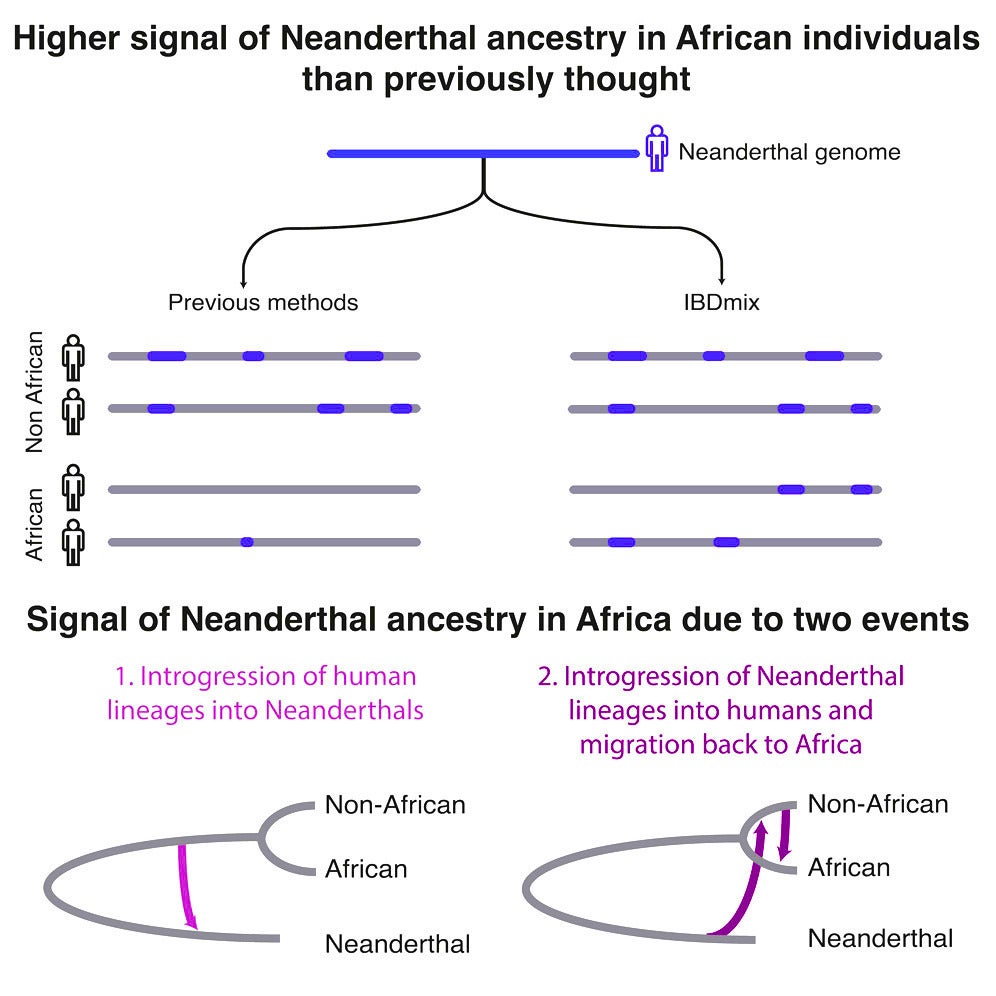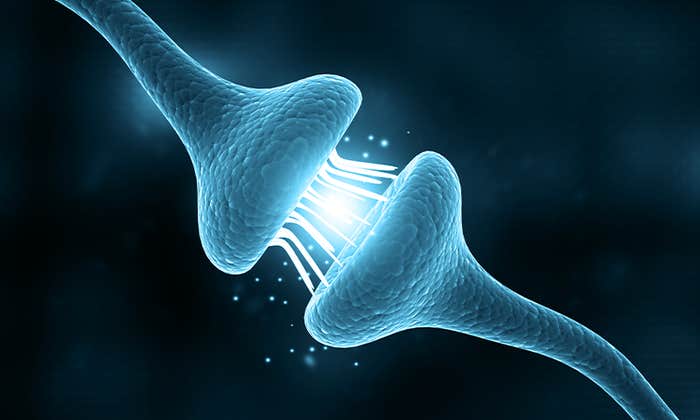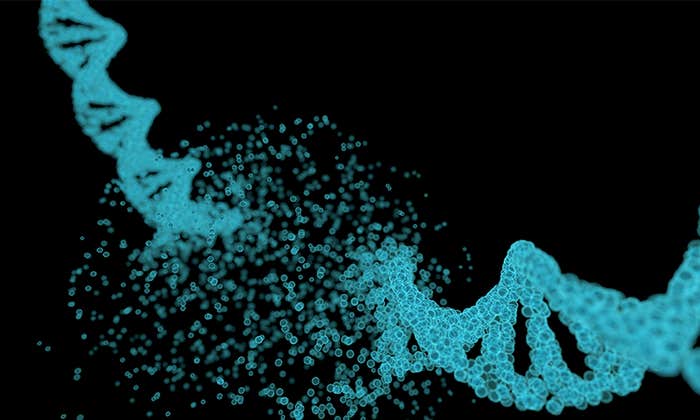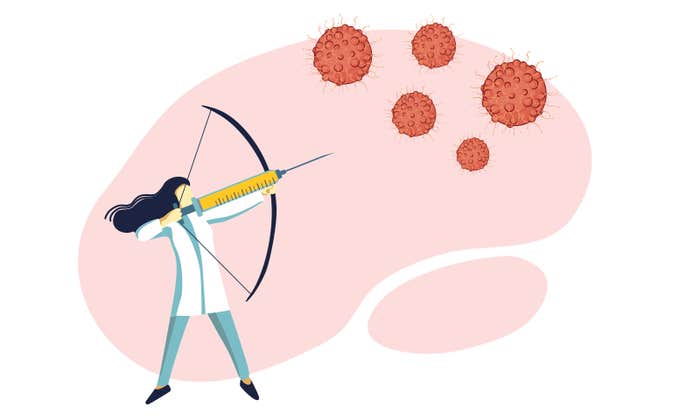For thousands of years, modern humans coexisted with their Neanderthal cousins, but the nature of their relationship has long been an enigma. Were they rivals? Did they avoid each other entirely? Or did they, as some researchers speculated, learn to coexist and even come to enjoy each other’s company? In the field of evolutionary biology, the possibility of Neanderthal-Homo sapiens romantic couplings turned into the academic equivalent of the Jennifer Anniston-Brad Pitt relationship rumors that grace the covers of supermarket tabloids: a topic of tremendous personal fascination and endless, seemingly unresolvable disagreements.
“People were not shy about feeling very strongly one way or another—and expressing it,” says Josh Akey, a professor of ecology and evolutionary biology at Princeton University who found himself captivated by the questions but dubious about the available answers. He watched with amusement the debates that repeatedly broke out at academic conferences he attended in the 1990s and early 2000s. “The capacity to argue about it was just infinite,” he recalls.
The kind of data needed to settle the arguments did not exist, Akey recognized, and perhaps it fundamentally could not exist. At the time, there was nothing more than evocative bits of circumstantial evidence. For instance, archaeological remains indicated that Neanderthals and Homo sapiens had been contemporaries who could have crossed paths in Europe, Siberia and the Far East in prehistoric times, with ample time and opportunity for inbreeding. Beyond that, though, the debaters could do little more than squint at fossils of Neanderthals, with their strangely angled cheek bones, prominent caveman-like brow lines, and thick, stumpy builds, and try to imagine whether they could really be part of our family.
Many researchers considered the idea preposterous. “Modern humans will mate with almost anything,” Ian Tattersall, curator of anthropology at the American Museum of Natural History, in New York City declared in 2000. “But there was no meaningful interchange of genes. I don’t think there was any chance that the two groups interbred in any significant way.”
Now we know that the skeptics like Tattersall were wrong. Unlikely as it seemed, Akey and a cohort of other software-literate biologists found ways to recover our species’ lost history by focusing on the evolutionary record locked inside the DNA in the nucleus of every one of our cells. At the same time, other researchers realized that they could recover large fragments of DNA from the inert-looking bones of our ancestors. Using computerized sequencing techniques to map the human genome, and machine-learning programs to detect subtle correlations between fossil and modern genetic patterns, the anthropology sleuths uncovered definitive evidence that Homo sapiens and Neanderthals interbred—evidence that is still written in our DNA.
Even more startling, the new computational analyses indicate that early humans’ promiscuity extended well beyond the Neanderthals, to a wide array of other, long-extinct hominid species. Some of those ancestors have never been identified in the fossil record. Their existence can be inferred only by the genetic traces they left behind. “To me that’s the true power of DNA,” Akey says. “That we can potentially find new branches of the human family tree—not by digging up bones, but by excavating them from our genomes.”
We modern humans got our first look at our former Neanderthal compatriots in 1856, when workers digging in a limestone quarry in Central Germany’s Neander Valley ventured into an isolated cave and discovered a strange bipedal fossil unlike anything ever seen before. Although it was clearly humanoid, its skull was oval shaped, with a low, unusually angled forehead. Its limbs were shorter and thicker than those of the average man on the street. In 1864, scientists christened the new species Homo neanderthalensis.
Over the following years, paleontologists identified scores more similar fossils like it and gathered evidence implying that this new hominid species was capable of building shelters, controlling fire, burying their dead, and creating symbolic objects. But it wasn’t until 1995 that the keepers of those first 40,000-year-old, Neander Valley fossils agreed to allow scientists to apply the tools of modern genetics to their precious remains. The curators of the Rheinisches Landesmusem in Bonn, Germany, where the fossils were stored, sawed off a tiny chunk of a fossilized arm bone. They sent it to Svante Pääbo, a Swedish scientist who had pioneered a new field aimed at uncovering new insights about human history by extracting tiny sequences of DNA from ancient human remains. And the Neanderthals entered the genetic age.
We can find new branches of the human family tree—not by digging up bones, but by excavating them from our genomes.
One of Pääbo’s graduate students, Matthias Krings, managed to extract a single fragment of DNA 379 bases long and extracted the first mitochondrial DNA. It was the beginning of a decades long hunt to obtain more genetic fragments and build up a clearer picture of the mysterious hominid. It took until 2010 for Pääbo, by then director of the genetics department at the Max Planck Institute for Evolutionary Anthropology, to obtain enough fragments to publish what was billed as the first “rough draft” of a Neanderthal genome in the journal Science.
With the help of a huge consortium consisting of more than 50 scientists, Pääbo and his team also applied the computational tools of modern genetics to begin to the fundamental questions about our ancestry, by comparing his Neaderthal “rough draft” to the modern human genome, which had been sequenced a decade earlier. Only then were scientists finally able to settle the long-running debate over Neanderthal-human mating. It took the cold logic of mathematics and computational analysis to expose the evolutionary implications of the passion that drives humans to throw logic to the wind: lust.
A crucial piece of evidence attesting to the amorous history of humans and Neaderthals came from the lab of Rasmus Nielson, a population geneticist and expert statistician at the University of California at Berkeley. Nielson had built a database of different human genomes from across the globe, including numerous samples from Africa, far outside the known geographic range of Neanderthals. He and his colleagues applied powerful machine-learning techniques to calculate the expected patterns of genetic variations between different populations of human beings. In the past, as those populations spread out and people settled far away from one another, their gene pools began to diverge. Nielson used computer algorithms to estimate the average amount of change one might expect with each new generation and then, working backwards, to predict how many generations earlier two distinct populations had split apart.
It was a task that required taking into account a dizzying number of variables. There were scores of three-billion-letters long genetic sequences that needed to be compared and contrasted. Out of this cornucopia of genetic data, Nielson was looking for segments of DNA from one human population that were so different from any other segment that they didn’t fit the normal pattern of gradual genetic change—differences so dramatic that they seemed to have appeared out of nowhere. Such out-of-the-blue DNA sequences could only have been inserted into the human genome through the genetic recombination of two individuals from very dissimilar human lineages, the result of a sexual encounter of the most unusual kind.
“They were too different from the rest of the DNA. They must have come from another species, because it doesn’t fit with the mode of the history of humans otherwise,” Nielson says. He and his team sent Pääbo the top 13 most divergent segments found in Europeans, which Pääbo’s group then compared to their newly sequenced Neanderthal genome. “Eleven of them were almost complete matches to genetic sequences found in the Neanderthal,” Nielson says.
Those matches proved the identity of the other species: Neanderthals had mated with modern humans. It was a breathtaking discovery that overturned the conventional wisdom and surprised even Pääbo himself. The 2010 paper was just the beginning of the story, however.
Opponents of the Neanderthal-Homo sapiens hypothesis initially remained doubtful about the larger significance of Pääbo’s discovery. They argued that the encounters might have been limited, and noted that most Africans, who were geographically isolated from the stomping grounds of Neanderthals, were unlikely to carry Neanderthal DNA. But in recent years, deeper forms of data crunching through the human genome have identified many more genetic sequences in modern Europeans that are suspected of coming from Neanderthals.
It is now widely accepted that 1 to 2 percent of the DNA in humans of European descent comes from Neanderthals. More disruptively, quantitative biology analysis has shattered one of the most deeply held ideas in human evolution: that Homo sapiens are the result of a single, sweeping migration out of Africa.
The first chink in that “out of Africa” hypothesis came courtesy of Adam Siepel, chair of the Simons Center for Quantitative Biology at Cold Spring Harbor Laboratory, a not-for-profit scientific research institution on New York’s Long Island. Earlier in his career, he had sought a deeper understanding of the AIDS crisis using a mix of genetics and statistics. Siepel wrote computer programs to compare different strains of HIV, the AIDS virus, and to identify distinct genetic signatures. He then used those signatures to infer the origins of the virus in different parts of the world, which enabled him to draw accurate maps about how the disease was spreading across the globe.
There were splits within the populations of Africa earlier and more profound than the out-of-Africa migration.
Since AIDS was spread through sexual encounters, such genome-tracking skills were easily transferable to questions about human lineage. In 2012, with that thought in mind, Siepel visited Pääbo’s lab at the Max Planck institute during a sabbatical. Siepel, then an assistant professor at Cornell University, had by then developed a software program designed to identify when the divergence occurred between two populations who shared a common ancestor. Of particular interest to Pääbo, the program could also identify whether members of distantly-related tribes met again many generations later on the savannas of Africa or the mountains of Europe and procreated—the kind of real-world, complicated intermixing of populations that tends to cloud any attempts at tracking down genetic origins of their progeny.
Using this mathematical model, which Siepel named the “Generalized Phylogenetic Coalescence Sampler,” he analyzed the number and locations of different mutations and was able to prove mathematically that the split between the African Hassan tribe (in modern-day Mauritania) and other African groups was three to four times as old as the split between Europeans and West Africans, which dated back a mere 50,000 years. Evidently, there were splits within the human populations of Africa that were earlier and even more profound than the out-of-Africa migration that brought humans into Europe, Asia, and the Middle East.
Pääbo was impressed and wanted to know, Could Siepel modify his technique to look at even older fossils? Was it possible, he wondered, that the Neanderthal-human mating was only one example in a long-running series of interbreedings between different human lineages? Nielson’s work had implied Neanderthals and humans interbred 50,000 to 60,000 years ago. Surprising as the event itself may have been, the circumstances made sense: It happened around the time that the ancestors of present-day non-Africans left Africa, allowing them to encounter Neanderthals who were already living in the Middle East or Europe. There, they mated and dispersed their DNA across all non-Africans. If there had been earlier interbreedings, though, the circumstances would have had to be quite a bit more complicated.
Siepel’s genetic software, which identified common segments of DNA not associated with any known incidents of inbreeding, confirmed Pääbo hunch. The human-Neanderthal love affair of 50,000 years ago was likely not the first interspecies relationship. The researchers’ analysis suggested that portions of the Neanderthal genome had been intermingled with human DNA since at least one much earlier cross-species encounter, sometime around 200,000 years ago.
That one was a real head-scratcher. “Neanderthals were restricted to Asia and Europe at that time,” Siepel says. “How could they have interbred 200,000 years ago if the Neanderthals were in Asia and Europe, and the modern humans hadn’t yet left Africa? It suggests that maybe there was an earlier migration out of Africa of modern humans.”

The hypothesis of an earlier African migration is now backed up by independent research by Princeton’s Akey. This past February, he published a paper in the journal Cell in which he used an innovative approach to analyzing DNA. Previous methods had relied on African DNA as a reference genome, taking it as a matter of faith that the reference genome contained no Neanderthal DNA in the mix. To overcome that limitation, Akey developed an alternative method for comparison. Instead of using African DNA as the point of reference, he and his team compared European DNA to the Neanderthal genome itself.
Individuals who have a common ancestor will share sections of DNA, naturally, but that those shared segments grow smaller with each passing generation. Making use of that pattern, Akey was able to distinguish between segments of human DNA that resembled Neanderthal DNA because of a common (even older) ancestor from segments that looked similar because the two species had interbred.
Akey’s genetic analysis established that some humans must have departed Africa 200,000 years ago and interbreed with Neanderthals. Those Neanderthals were already carrying modern human DNA when they met the next waves of humans 140,000 years later, just as Siepel’s work had implied. Then there was yet another migratory twist. Some of the initial Neanderthal-human hybrids returned back to Africa and bred with the humans living there, introducing Neanderthal DNA into a population of humans long believed not to carry any.
As with almost any family history, the story of human ancestry turns out to be full of mixed marriages and sudden relocations that are missing from the official accounts. Now that people like Akey and Siepel know how to look, more and more of these secrets keep coming to light.
Recent discoveries—by Pääbo, as well as by David Reich, a researcher at the MIT-Harvard University Broad Institute, and others—reveal that Neanderthals and Homo sapiens are likely not the only early hominids to have interbred. In 2010, scientists extracted DNA from a juvenile female finger bone in a Siberian cave and determined that it did not match the genetic profile of any known hominid. The finger belonged to a new species now called Denisovan, after the Siberian Denisova Cave where it was discovered. Using the same types of genetic sequence-matching performed by Siepel, researchers have established that Aboriginal Australians and their neighbors carry about 3 to 5 percent Denisovan DNA in their genomes.
“I envision bands of hunter-gatherers viewing one another with suspicion and curiosity, but also with a sense of commonality.”
In the case of the Neanderthals and the Denisovans, we have some fossil remains (however fragmentary) to use for reference. But the latest in-depth analyses of the modern human genome have identified sequences that appear to be too disparate to have come from any known hominid: not Homo sapiens, but not Neanderthals or Desnovians, either. It seems that early Homo sapiens interbred with a wide array of extinct species that left behind no physical traces—at least, no traces that anyone has yet discovered.
Arun Durvasula and Sriram Sankararaman, human geneticists at UCLA, have recently been analyzing whole-genome data from present-day West Africans in search of these “ghost hominids.” In a new paper, the two researchers identify a portion of genetic material in the West African populations that appears to have come from a mysterious hominid that split off from the human tree before Neanderthals. The authors found the local populations derive 2 to 19 percent of their genetic ancestry from this undiscovered ancient ancestor. Akey is no longer surprised. He expects that quantitative genetics tools could easily turn up “tons more” of these evolutionary ghosts who left no discernible fossil record, but whose DNA lives on inside us.
“For me, as an evolutionary biologist, this is the most exciting thing that has happened within the last 10 or 20 years,” says UC Berkeley’s Nielson. “We’re trained to think of evolution as a branching tree, but we’re learning now it’s not like that at all. It’s much more like a network of genes interchanged between species.”
Unfortunately, the grand genetic revelations still do not answer the more personal questions: How did the different groups interact? How did they regard one another? Even the most data-driven scientists can’t resist trying to imagine how our ancestors really lived.
“I envision bands of hunter-gatherers encountering one another intermittently and viewing one another with some mixture of suspicion and curiosity, as humans are wont to do for any group that’s different from themselves,” Siepel says. “They probably also sensed a great deal of commonality and interacted at some level—maybe trading, maybe pointing out shared resources, and just circling around each other. In some of those interactions, curiosity led to more than casual interaction. And that’s what left its signature in our genomes today.”
Top image: Neanderthal (foreground) and human skulls. Credit: Petr Student


























